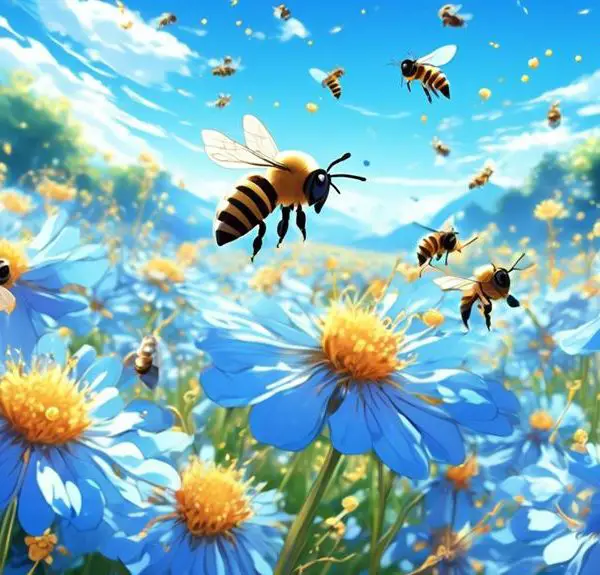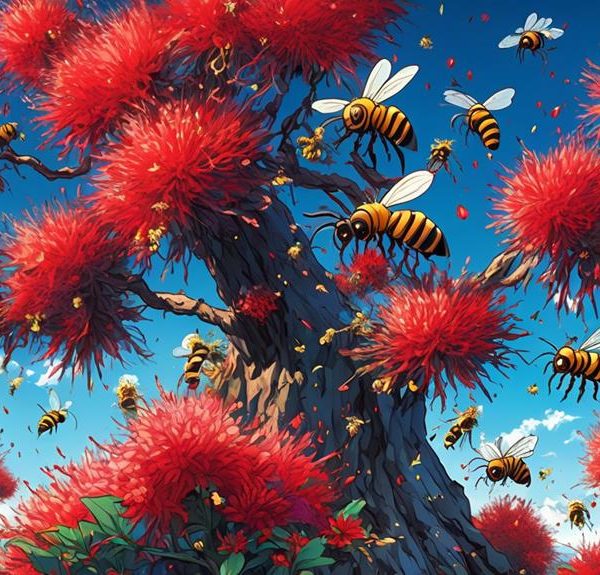Bee behavior and blue phlox blooms, discover their intriguing relationship and its impact on creating a bee-friendly garden.

Do Bees Like Blue Phlox
Just as a connoisseur carefully selects their preferred vintage from a vast cellar of wines, bees too, have their preferences when it comes to flowers. You've likely seen them buzzing around your garden, seemingly enamored with certain blooms over others. But have you ever wondered if they have a particular fondness for the blue phlox?
It's a question worth considering, especially if you're aiming to create a bee-friendly environment. This discussion might just lead you to the answers, and perhaps, even inspire a redesign of your garden.
However, before we get into the specifics, it's crucial to first understand the basics of bee behavior and their relationship with flowers.
Key Takeaways
- Bees are attracted to blue phlox due to its high UV reflectance and specific spectrum of light.
- Blue phlox provides essential nectar with a high sugar concentration, which is a valuable energy source for bees.
- The distinctive fragrance of blue phlox makes it irresistible to bees.
- Blue phlox promotes biodiversity by attracting pollinators and suppressing weed growth in gardens.
Understanding the Bee's Preferences
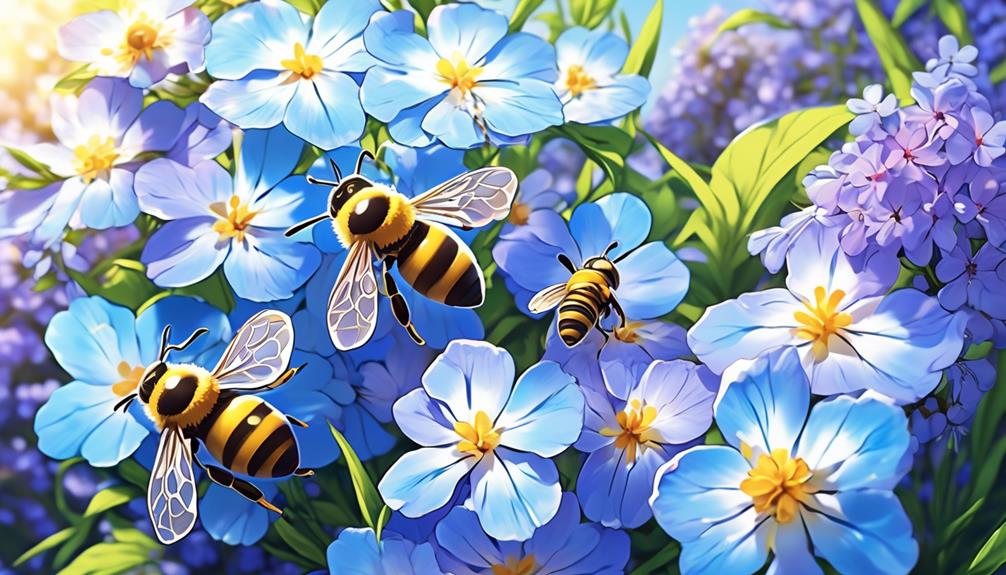
To fully grasp why bees might be attracted to blue phlox, it's crucial to first understand their unique color preferences and how these preferences impact their foraging habits. Bees don't see the world as we do. They perceive colors in the ultraviolet spectrum, a spectrum that's invisible to us. This ability allows them to detect patterns on flowers that we can't see, guiding them to the nectar and pollen they need.
Blue phlox, in particular, has a high UV reflectance, making it stand out in the bee's perception. It's like a beacon, drawing bees in with its vibrancy. However, color isn't the only factor that influences a bee's preference. The scent of a flower, its shape, and the type and quantity of nectar it provides are equally important.
The Allure of Blue Phlox
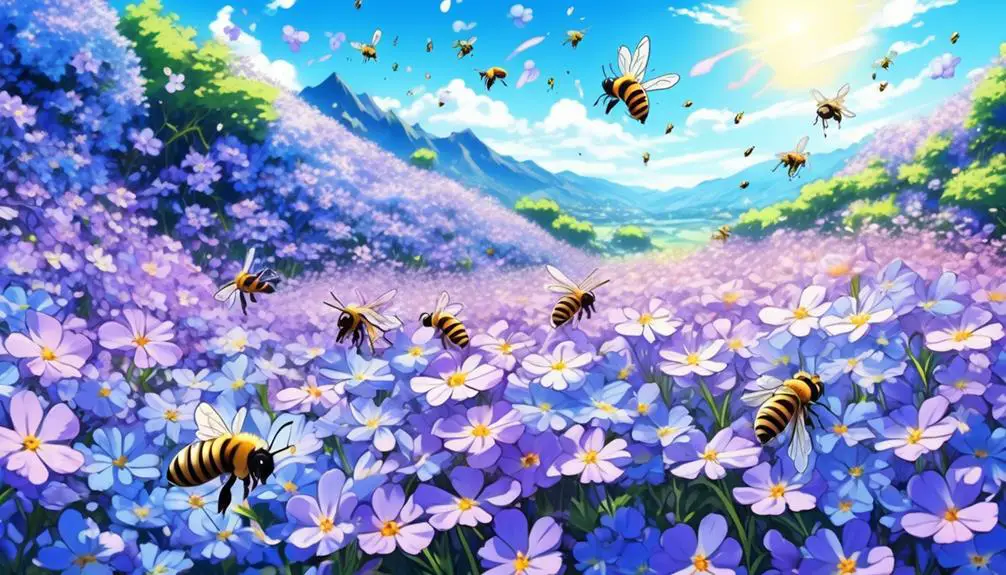
Understanding these factors, let's consider why blue phlox, with its unique characteristics, has such a strong allure for bees.
Blue phlox, scientifically known as Phlox divaricata, emits a specific spectrum of light that's highly attractive to bees. You see, bees' vision is tuned towards the ultraviolet end of the spectrum, and blue phlox appears incredibly vibrant in this range.
Additionally, its nectar is rich in sugars, essential for the bees' energy requirements. Bees don't just enjoy the nectar, they need it to fuel their flight and feed the hive. The sugar concentration in blue phlox nectar is particularly high, making it an excellent energy source.
Blue phlox also produces a distinctive fragrance, a mix of volatile organic compounds that bees find irresistible. It's like a fragrant beacon, guiding bees to its plentiful nectar stores.
Bees and Blue Phlox Interaction
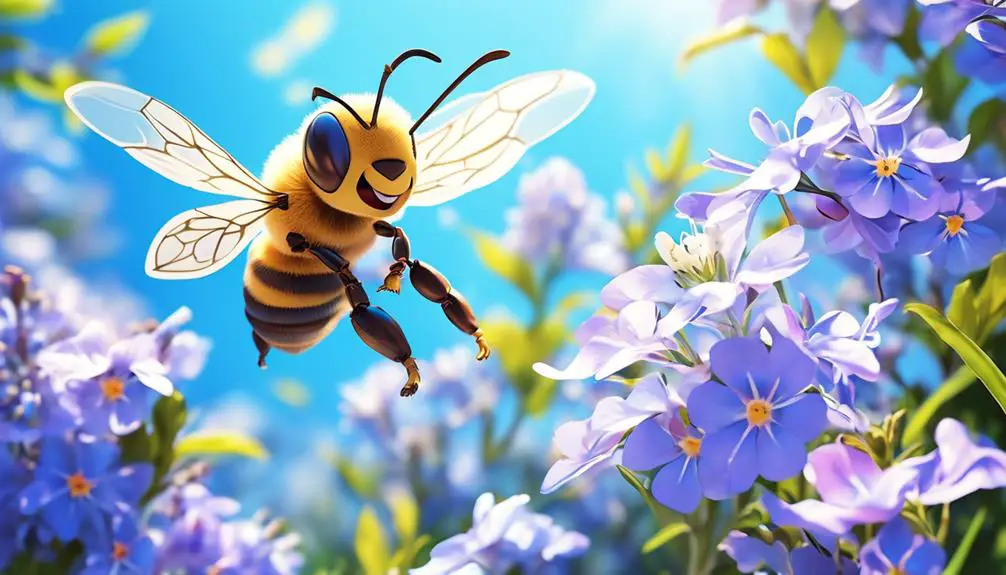
Given the irresistible allure of blue phlox, bees actively seek out these plants, establishing a symbiotic relationship that's fascinating to observe. This interaction isn't random; it's a product of evolutionary adaptation. You see, bees have photoreceptors that are sensitive to the blue and ultraviolet spectrum, and blue phlox falls within this range.
As a bee lands on a phlox, it's foraging for nectar. But this isn't a one-sided relationship. As the bee burrows deeper into the flower, pollen grains attach to its hairy body. As the bee moves from flower to flower, some of these grains rub off, facilitating cross-pollination.
This symbiotic relationship helps both parties. The blue phlox gets a helping hand in reproduction, ensuring genetic diversity and resilience. For the bee, it's a meal ticket. The nectar provides energy in the form of sugars, vital for its survival and the well-being of the hive.
Importance of Blue Phlox in Gardens
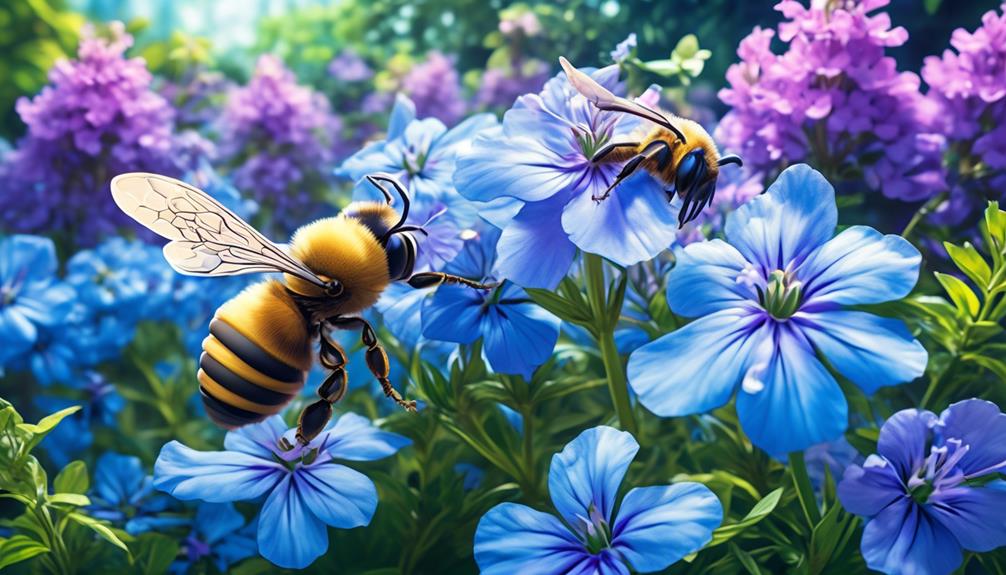
While appreciating the crucial role bees play in the life cycle of blue phlox, it's equally important to recognize how these vibrant flowers enhance and bring benefits to our gardens.
Blue phlox, scientifically known as Phlox divaricata, is an ornamental plant that adds a splash of color to your garden. Their bright blue-violet hue isn't just aesthetically pleasing, but also serves a crucial role in attracting pollinators like bees, butterflies, and even hummingbirds.
These plants are a valuable addition to any garden due to their high nectar production, which serves as a major food source for these pollinators, thereby promoting biodiversity. But that's not all. Blue phlox, being a perennial plant, is a hardy species that's able to withstand various weather conditions, making them a low-maintenance addition to your garden.
Moreover, they're well-known for their ability to suppress weed growth through their dense foliage, reducing the need for chemical herbicides. And with their sweet, mild fragrance, they're sure to make your garden a more enjoyable place.
Boosting Bee Attraction With Blue Phlox

In the quest to increase bee attraction to your garden, incorporating blue phlox can serve as a compelling strategy due to its high nectar production and vibrant coloration. These plants not only add a splash of color but also create an inviting environment for bees.
Blue phlox flowers are rich in nectar, which bees need for energy. They're also brilliantly blue, a color that bees can easily see. By planting a healthy amount of blue phlox in your garden, you'll be providing a vital food source for bees, while also benefiting from the pollination they provide.
Here's a quick guide on how to boost bee attraction with blue phlox:
Steps | Details |
|---|---|
Choose a sunny spot | Bees prefer sunlit areas |
Plant blue phlox | They're bee-friendly and vibrant |
Water regularly | Keeps plants healthy |
Avoid pesticides | Harmful to bees |
Monitor growth | Ensure plants are thriving |
Other Bee-Friendly Plants to Consider

Beyond the allure of blue phlox, there's a whole range of other plants you can add to your garden to make it even more appealing to bees. The key is to provide a variety of plants that bloom at different times of the year, ensuring a constant food supply.
Lavenders, with their fragrant purple flowers, are a great choice. They're rich in nectar and bloom in the summer.
Another excellent option is the sunflower. These bright, large blooms offer ample landing space and nectar for bees.
For a fall-blooming plant, consider sedum. Its succulent leaves and bright flowers are a late-season feast for bees.
Meanwhile, the versatile and hardy salvia, which blooms from summer to fall, offers nectar in abundance.
Shrubs like the butterfly bush and spirea also attract bees. They offer a constant bloom throughout the summer, providing a reliable source of nectar.
Frequently Asked Questions
What Other Insects Are Attracted to Blue Phlox?
You're curious about what other insects are drawn to blue phlox, aren't you? Besides bees, butterflies, and hummingbirds find this plant irresistible. You'll often see them fluttering around the blooms, sipping nectar.
Additionally, day-flying moths and some beetles are known to visit. Even night time brings visitors like hawk moths.
How Do Changes in Climate or Season Affect the Relationship Between Bees and Blue Phlox?
Changes in climate or season significantly affect your bees' interaction with blue phlox. In colder seasons, bees can't collect as much nectar because the flowers don't bloom as abundantly.
Also, if the climate becomes too hot, it could stress the bees, reducing their ability to forage. So, it's crucial to monitor climate changes, as they directly impact the symbiotic relationship your bees have with blue phlox.
How Can Blue Phlox Be Propagated or Grown in Different Regions?
You can propagate blue phlox through division, seeds, or cuttings.
It's best to divide in early spring or fall.
If using seeds, start them indoors 6-8 weeks before the last frost date.
For cuttings, take them in summer and provide plenty of moisture.
Blue phlox grows well in various regions as long as they've full sun to partial shade and well-drained soil.
It's also a good idea to add compost for extra nutrients.
Are There Any Potential Risks or Drawbacks to Bees if They Consume Too Much Nectar From Blue Phlox?
You're wondering if there are risks for bees consuming too much nectar from blue phlox. There's no evidence suggesting this poses a threat.
Bees typically balance their diet by visiting various plant species. However, if a bee's diet is exclusively blue phlox nectar, it might lack certain nutrients.
How Does the Presence of Blue Phlox Affect the Overall Health and Population of Bees?
You're pondering how blue phlox affects bee health and population.
Well, blue phlox can indeed have a positive effect. It provides bees with a rich source of nectar, enabling them to thrive. The plant's vivid color also attracts bees, helping boost their numbers.
However, it's crucial to maintain plant diversity. Relying heavily on one type of plant, even blue phlox, can make bees vulnerable to changes in that plant's availability or health.
Conclusion
So, you've discovered bees' affinity for blue phlox. They're drawn to its vibrant hue and nectar-rich blossoms. Your garden can play a key part in their survival, offering a vital food source.
Considering blue phlox, along with other bee-friendly plants, not only enriches your garden's aesthetics, but also contributes to a healthier ecosystem.
Remember, your planting choices matter, and opting for blue phlox is a win for you and our buzzing friends alike.

